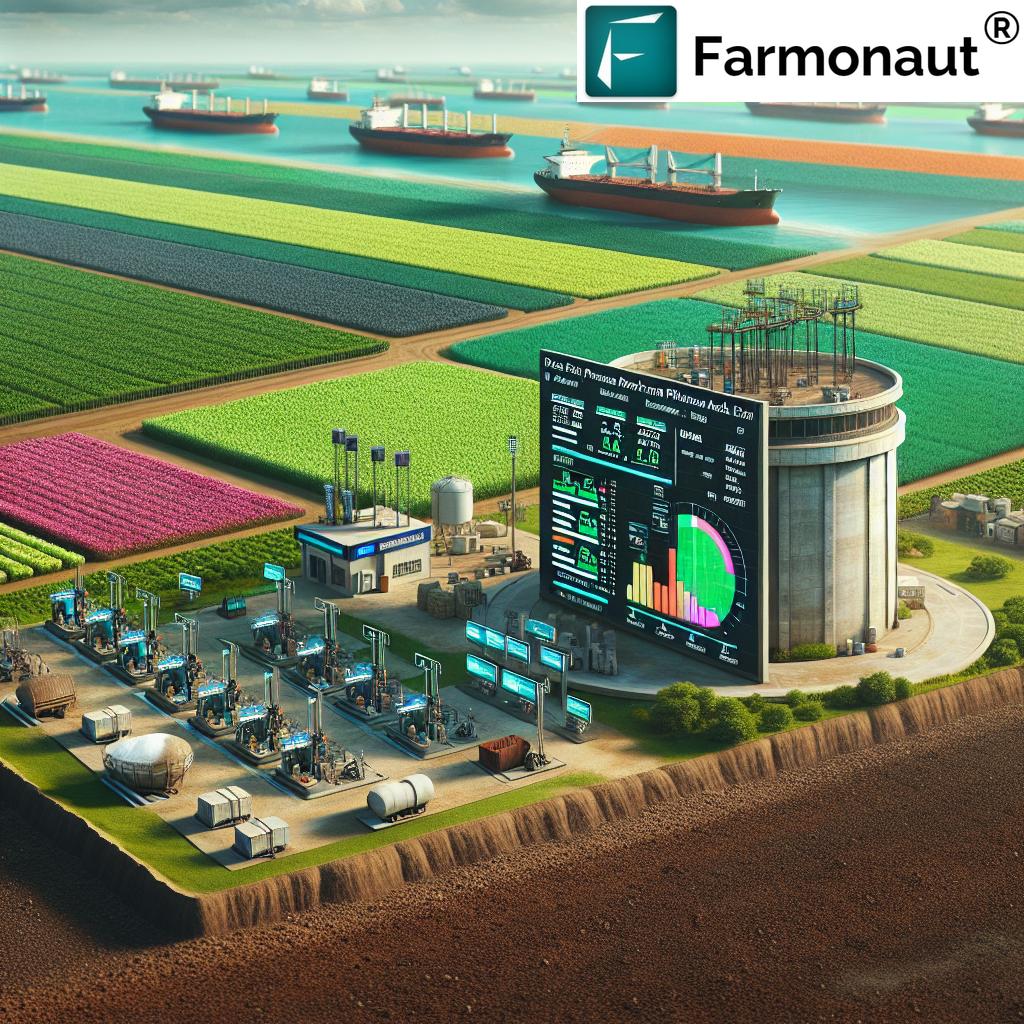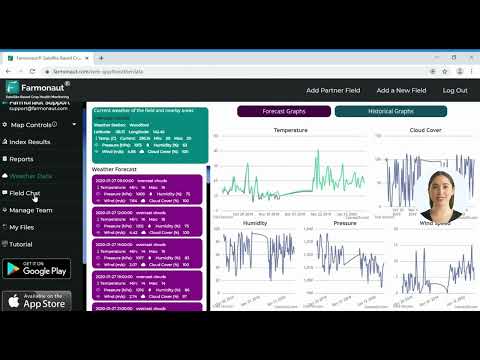Indian Phosphoric Acid Market: Key Trends and Tender Insights for Fertilizer Industry in 2023
“India and Bangladesh’s recent phosphate fertilizer tenders reveal significant fluctuations in P2O5 content and pricing strategies.”
Welcome to our comprehensive analysis of the Indian phosphoric acid market and its implications for the fertilizer industry in 2023. As we delve into the intricate world of agricultural inputs, we’ll explore the latest trends, tender insights, and market dynamics shaping this crucial sector. At Farmonaut, we understand the importance of staying informed about these developments to make data-driven decisions in agriculture.
The Phosphoric Acid Landscape in South Asia
The phosphoric acid market in South Asia, particularly in India and Bangladesh, has been experiencing significant shifts in recent months. These changes have far-reaching implications for the fertilizer industry, agricultural productivity, and ultimately, food security in the region. Let’s break down the key components of this complex market:
- Phosphoric acid imports and tenders
- Fluctuations in P2O5 content
- Pricing strategies and contract prices
- Impact of global supply and demand on regional markets
To better understand these dynamics, let’s first examine some recent tender activities that have caught the attention of industry experts.
Recent Tender Insights: India’s Fertilizer Import Strategy
On January 6, 2023, a significant development occurred in the Indian fertilizer sector. Fact, a prominent Indian fertilizer importer and producer, announced a tender that caught the eye of market watchers. Let’s break down the key details of this tender:
- Quantity Sought: Up to 12,000 tons of phosphoric acid solution
- Closing Date: January 13, 2023
- P2O5 Content Requirement: Between 46% and 53%
- Delivery Location: Kochi port, southwest coast of India
- Expected Arrival: February 25 to March 6, 2023
This tender is particularly noteworthy as it provides insights into India’s current fertilizer import strategy and the specifications demanded by major players in the industry.
Pricing Mechanisms and Benchmarks
One of the most intriguing aspects of this tender is the pricing mechanism. Offers are expected to be quoted as either a premium or discount relative to a benchmark price. Here’s what you need to know:
- Benchmark Price: $1,060 per ton of P2O5
- Reference Point: This benchmark represents the contract price for phosphoric acid shipments to India during Q4 of the previous year
- Credit Terms: 30 days of credit will be factored into these transactions
This pricing structure demonstrates the complex financial arrangements involved in large-scale chemical imports and highlights the importance of benchmark prices in the phosphoric acid market.

Bangladesh’s Phosphoric Acid Market Activities
While India’s tender process was unfolding, neighboring Bangladesh was also making moves in the phosphoric acid market. The Bangladesh Chemical Industries Corporation (BCIC), a state-owned importer, closed a tender for phosphoric acid procurement on January 1, 2023. Here are the key details:
- Quantity Sought: 20,000 tons of phosphoric acid solution
- P2O5 Content Requirement: 52%-54%
- Bidder: Only one bid received, from Sun International
- Quoted Price: $617.76 per ton cfr (cost and freight)
- Equivalent P2O5 Price: $1,144 to $1,188 per ton of P2O5 cfr
This recent tender in Bangladesh provides a valuable point of comparison to the Indian market and offers insights into regional pricing trends.
Historical Context: November Tenders
To fully appreciate the current market dynamics, it’s essential to look at recent historical data. In November, two significant tenders took place in Bangladesh:
- Sun International Bid:
- Quantity: 20,000 tons of the same acid grade
- Price: Approximately $1,150 to $1,194 per ton of P2O5 cfr
- Merchant-Grade Acid Tender (November 18):
- Quantity: 10,000 tons
- Price Range: $1,163 to $1,213 per ton of P2O5 cfr
These historical data points indicate ongoing fluctuations in the phosphoric acid market and provide context for current pricing strategies.
Market Dynamics and Stakeholder Strategies
The activities of major players like Fact in India and BCIC in Bangladesh reflect the current dynamics in the phosphorus acid segment of the fertilizer industry in South Asia. These tenders and offers provide valuable insights into:
- Demand patterns for phosphoric acid
- Competitive pricing strategies
- Influence of various market stakeholders
- Regional variations in pricing and specifications
It’s clear that market participants are closely monitoring pricing trends and supply sources, which are crucial for agricultural inputs in both India and Bangladesh.
“Farmonaut analyzes South Asian fertilizer market dynamics, covering contract prices and global supply-demand impacts on regional markets.”
Farmonaut’s Role in Agricultural Intelligence
At Farmonaut, we recognize the importance of staying informed about these market trends. Our satellite-based farm management solutions provide valuable insights that complement market intelligence. By leveraging advanced technologies, we help farmers and agribusinesses make informed decisions in this dynamic environment.
Explore our solutions:
Global Factors Influencing the Phosphoric Acid Market
The phosphoric acid market in South Asia doesn’t exist in isolation. Several global factors are influencing prices and availability:
- Raw Material Costs: Fluctuations in phosphate rock prices
- Energy Prices: Impact on production and transportation costs
- Geopolitical Tensions: Disruptions in major producing countries
- Environmental Regulations: Stricter controls on phosphate mining and processing
- Agricultural Demand: Global crop production trends and food security concerns
These factors create a complex web of influences that shape the phosphoric acid market in India, Bangladesh, and beyond.
Phosphoric Acid Grade Specifications and Their Importance
The tenders we’ve examined highlight the importance of phosphoric acid grade specifications, particularly the P2O5 content. Let’s delve deeper into why these specifications matter:
- P2O5 Content: Determines the phosphorus concentration and efficiency of the fertilizer
- Impurities: Lower levels of impurities like heavy metals are preferable for agricultural use
- Solubility: Affects how quickly the phosphorus becomes available to plants
- Compatibility: Different grades may be better suited for specific crops or soil types
Understanding these specifications is crucial for both producers and consumers in the fertilizer industry. At Farmonaut, we help farmers interpret this information to make optimal decisions for their specific agricultural needs.
Impact on Agricultural Chemical Imports
The trends we’re observing in the phosphoric acid market have significant implications for agricultural chemical imports across South Asia. Here’s how:
- Supply Chain Management: Fluctuations in prices and availability affect import strategies
- Fertilizer Formulation: Changes in phosphoric acid grades may influence downstream fertilizer products
- Inventory Planning: Importers must carefully balance stock levels with market volatility
- Trade Policies: Governments may adjust import regulations based on market conditions
These factors collectively shape the landscape of agricultural inputs in the region, influencing everything from farm-level decisions to national agricultural policies.

Fertilizer Pricing Strategies in South Asia
The pricing strategies employed in the phosphoric acid market offer insights into broader fertilizer pricing mechanisms in South Asia. Key aspects include:
- Benchmark Pricing: Use of reference prices for contract negotiations
- Premium/Discount System: Flexibility in pricing based on market conditions
- Credit Terms: Impact of financial arrangements on effective prices
- Volume-Based Pricing: Potential discounts for larger orders
- Quality Premiums: Higher prices for superior grades or specifications
These strategies reflect the complex interplay of supply, demand, and quality considerations in the fertilizer industry.
Technological Advancements in Fertilizer Production and Use
While market dynamics are crucial, technological advancements are equally important in shaping the future of the fertilizer industry. At Farmonaut, we’re at the forefront of integrating technology into agriculture. Here are some key areas of innovation:
- Precision Agriculture: Using satellite data to optimize fertilizer application
- Smart Sensors: Real-time monitoring of soil nutrient levels
- AI-Driven Recommendations: Tailored fertilizer advice based on crop and soil data
- Sustainable Formulations: Development of more environmentally friendly phosphate fertilizers
These advancements are helping to increase efficiency and sustainability in fertilizer use, complementing the market trends we’ve discussed.
For more information on how technology is transforming agriculture, visit our API page or explore our API Developer Docs.
Environmental Considerations in Phosphate Fertilizer Production
As the industry evolves, environmental considerations are becoming increasingly important in phosphate fertilizer production and use. Key areas of focus include:
- Waste Reduction: Minimizing phosphogypsum and other byproducts
- Water Conservation: Implementing more efficient production processes
- Carbon Footprint: Efforts to reduce energy consumption in fertilizer manufacturing
- Circular Economy: Exploring phosphorus recovery and recycling methods
These environmental factors are likely to influence future market trends and regulatory landscapes in the phosphoric acid and fertilizer industries.
The Role of Government Policies
Government policies play a significant role in shaping the phosphoric acid and fertilizer markets in South Asia. Key policy areas include:
- Subsidy Programs: Impact on fertilizer pricing and availability
- Import Regulations: Influence on international trade in phosphoric acid
- Environmental Standards: Affecting production methods and product specifications
- Agricultural Policies: Shaping overall demand for fertilizers
Understanding these policies is crucial for all stakeholders in the fertilizer industry, from importers to end-users.
Phosphoric Acid Market Trends in South Asia (2023)
| Country | Recent Tender Date | Phosphoric Acid Grade (P2O5 Content %) | Quantity (Estimated Metric Tons) | Price (Estimated USD/Ton) | Major Suppliers |
|---|---|---|---|---|---|
| India | January 6, 2023 | 46% – 53% | 12,000 | $1,060 (benchmark) | Various (Tender) |
| Bangladesh | January 1, 2023 | 52% – 54% | 20,000 | $1,144 – $1,188 | Sun International |
| Bangladesh | November 2022 | 52% – 54% | 20,000 | $1,150 – $1,194 | Sun International |
| Bangladesh | November 18, 2022 | Merchant Grade | 10,000 | $1,163 – $1,213 | Various (Tender) |
Future Outlook for the Phosphoric Acid Market
As we look to the future of the phosphoric acid market in South Asia, several key trends and factors are likely to shape its trajectory:
- Sustainable Agriculture: Increasing demand for environmentally friendly fertilizers
- Technology Integration: Greater use of precision agriculture techniques
- Market Consolidation: Potential mergers and acquisitions in the fertilizer industry
- Alternative Phosphorus Sources: Research into novel sources and recycling methods
- Climate Change Adaptation: Adjusting fertilizer strategies for changing agricultural conditions
At Farmonaut, we’re committed to helping farmers and agribusinesses navigate these evolving trends with our cutting-edge satellite-based solutions.
Conclusion
The phosphoric acid market in South Asia, particularly in India and Bangladesh, is experiencing significant dynamics that reflect broader trends in the global fertilizer industry. From fluctuating P2O5 content requirements to complex pricing strategies, the market is adapting to a range of economic, environmental, and technological factors.
As we’ve explored, recent tenders and market activities provide valuable insights into the current state of the industry. These trends have far-reaching implications for agricultural productivity, food security, and economic development in the region.
At Farmonaut, we understand the critical role that accurate market information and technological innovation play in modern agriculture. Our satellite-based solutions are designed to complement market intelligence, helping farmers and agribusinesses make informed decisions in this dynamic environment.
As the industry continues to evolve, staying informed and adaptable will be key to success. We encourage all stakeholders in the agricultural sector to keep a close eye on these market trends and to leverage advanced technologies to optimize their operations.
FAQs
- What is phosphoric acid, and why is it important for agriculture?
Phosphoric acid is a key component in phosphate fertilizers, providing essential phosphorus nutrients for plant growth. It’s crucial for root development, energy transfer, and overall crop health. - How do fluctuations in the phosphoric acid market affect farmers?
Market fluctuations can impact fertilizer prices and availability, potentially affecting farmers’ input costs and crop management strategies. - What role does P2O5 content play in phosphoric acid quality?
P2O5 content indicates the concentration of phosphorus in the acid. Higher concentrations generally mean more efficient fertilizers, but may also affect price and handling requirements. - How are environmental concerns impacting the phosphoric acid industry?
Environmental concerns are driving research into more sustainable production methods, waste reduction, and alternative phosphorus sources to minimize ecological impact. - What technological advancements are shaping the future of fertilizer use?
Precision agriculture, smart sensors, AI-driven recommendations, and sustainable formulations are some key technological advancements influencing fertilizer application and efficiency.






